
Murray Griffin (1903-2), The Stables
Two Fires
One, the summer fire
outside: the trees melting, returning
to their first red elements
on all sides, cutting me off
from escape or the saving lakeI sat in the house, raised up
between that shapeless raging
and my sleeping children
a charm: concentrate on
form, geometry, the human
architecture of the house, square
closed doors, proved roofbeams,
the logic of windows(the children could not be wakened:
in their calm dreaming
the trees were straight and still
had branches and were green)The other, the winter
first inside: the protective roof
shriveling overhead, the rafters
incandescent, all those corners
and straight lines flaming, the carefully-
made structure
prisoning us in a cage of blazing
bars
the children
were awake and crying:
I wrapped them, carried them
outside into the snow.
Then I tried to rescue
what was left of their scorched dream
about the house: blankets,
warm clothes, the singed furniture
of safety cast away withthem
in a white chaosTwo fires in
formed me,(each refuge fails
us; each danger
becomes a haven)left charred marks
now around which I
try to growfrom Margaret Atwood’s poetry sequence, The Journals of Susanna Moodie
Dear Friends and readers,
Since my last blog on Trollope from a post-colonialist perspective about two weeks ago, I’ve been reading more Australian authors, about Australian history and literature, and watching more Australian films, especially those having to do with Victorian and Edwardian settlers. I’m still trying to work out thoughts I’ve had and understand the criticism and controversies. In this blog I’ll focus on a novel, bringing in a couple of films and critical-historical essays more briefly.
I’ve finished Catherine Martin’s 1890 An Australian Girl about Stella Courtland, a perceptive, ethical reading girl, who lives just outside Adelaide, South Australia. We see how family and social pressures, unscrupulous relatives and friends who use her to extract money needed to carry on an ambitious social life, the limited range of options and people the heroine can meet — all lead to her ending up with a thwarted life. Letters and the heroine’s experiences within Australia among different towns (or the city) and Bush (rural, mining, farming, desert, aborigine) communities enable Martin to elaborate a persuasive understanding of the environment and varied cultural groups in Australia, and of its books, of the influence of landscape and climate. Martin roots the manners and crises we see in the real Australian and colonial past of her characters and their families. Boredom or frustration and stress seems the cause of the alcoholism of Ted Ritchie, the unintellectual businessman Stella is tricked into marrying by Ted’s unscrupulous desperate sister, Laurette, who lives in a version of le monde in Sydney; her sexually unfaithful, spendthrift husband bankrupts them. That Anselm Langdale, a young physician Stella falls in love with has to go back to England thousands of miles away from her enables Laurette to separate the lovers and causes Stella’s tragedy — the loss of a man who could have helped her lead a fulfilled life.
Meanwhile due to what Stella reads, her education, her thoughts, how she understands life is mainly as a person living at the far periphery of an English empire where the center is London and (from her reading) ambiance European. (This reminds me of Andrea Levy’s Small Island: black Jamaicans are given English history to read so that they identify as English and are shocked when they emigrate to London to discover they are not respected, not seen as English at all.) This is not to say she doesn’t know better at some level: one of the remarkable features of the book is how Stella repeatedly comes across characters outside her milieu whose life stories are fitted into the narrative and we read of types of desperate characters enduring harsh lives, brutal experiences typical of life in Bush stories where characters are carving out an existence where there is no built society or cultivated landscape to start with. These feel powerful in the way of Henry Lawson’s famous sketches (“The Drover’s Wife”) or the grim scenarios of Barbara Baynton (I loved her one of a servant’s life of semi-slavery, servitude in a middle class home). Stella shows real respect for aborigine beliefs and the people she sees (admittedly from afar). Memory is treacherous but the only (it’s not only) group omitted seems to be convicts; at least I don’t remember any characters (maybe the realism made them ex-convicts hiding their pasts). The book has a lot of subtle satire exposing the European characters, a post-colonialist outlook where she inveigns against the devastating desolating wars the imperial powers inflict on the native people.

Telegraph Depot, Ninety Miles up the Roper River, Northern Territory,” Illustrated Sydney News, 31 August 1872
I’ve been reading about what is Australian identity or the central hallmarks of its culture and again and again it’s said to be life for people in the “bush:” its terrific hardships, the background of forced transportation of the poorest and most miserable as convicts, or self-forced emigration because voluntary life had no future (one reason for the rise of these horrific organizations is there is nowadays no new continent to take over, to send young men and women to to get rid of them); the strong leftist communitarian ideals of early Australian politics come from this. It seems most classic Australian literature is of the Bush type.
What are some of the results for women — they are the marginal vulnerable people, victims who could be raped, or the stalwart re-creators as far as is possible of the older British homelife, with all its mores, holidays (Christmas) and repressions.
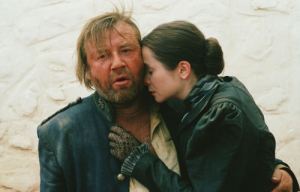
Ray Winstone and Emily Watson as Morris and Martha Stanley (The Proposition)
Martin’s book pinpoints this Bush material (so to speak) philosophically and emotionally and as something aesthetic and spiritual. I dislike that word very much as it seems to me so ambiguous so let me define my use as something not pragmatic, not dependent on something that gives the person bodily or monetary advantage or prestige. Inward experience that is valued that comes from this odd living in an imagined perphery, in this harsh but (to Europeans let us remember) strange and beautiful landscape. This inwardness which is identified as religious feeling may be found in Patrick White, especially it’s said his Voss (which I’ve read about, not read); but also is in his Fringe of Green Leaves (which I have read). — central to it. I can see that as opposed to White, Martin wants to analyse this. And she wants to make an unconventional woman her center (as does Barbara Baynton).
***********************
The second Australian film I chose (my first was Cave and Hillcoat’s The Proposition) was Picnic at Hanging Rock, directed by Peter Weir, often identified as a “first” and primary one which began the “new” Australian film industry (post-WW2) that seemed modern contemporary and was carried outside Australia to the US, to Europe. There was an Australian film industry before this film by Weir (a 1970s film), and it told important mythic stories — the very first of the talkies was about the Kelly Gang: Peter Carey’s book which won the Booker was about the Kelley Gang; The Proposition centers on the Burns brothers.
Picnic at Hanging Rock is based on a novel by Joan Lindsay, said to be a mystery but if you expect anything like Agatha Christie you are quickly disabused. There is no Sherlock Holmes, solver of puzzles. It moves slowly and most of the time not much happens in a dramatic or theatric way. A group of girls, adolescent, going into puberty, go on a picnic they hold once a year by a scary outcrop of rocks (like a neolithic site). The heat, snakes and insects are venomous, can cause disease or death. We are not told why they go to such a place, only see the headmistress is a fierce woman not likely to give any reasons.
Once there the girls seem to fall into an entranced state, and playfully go behind or into the rocks.
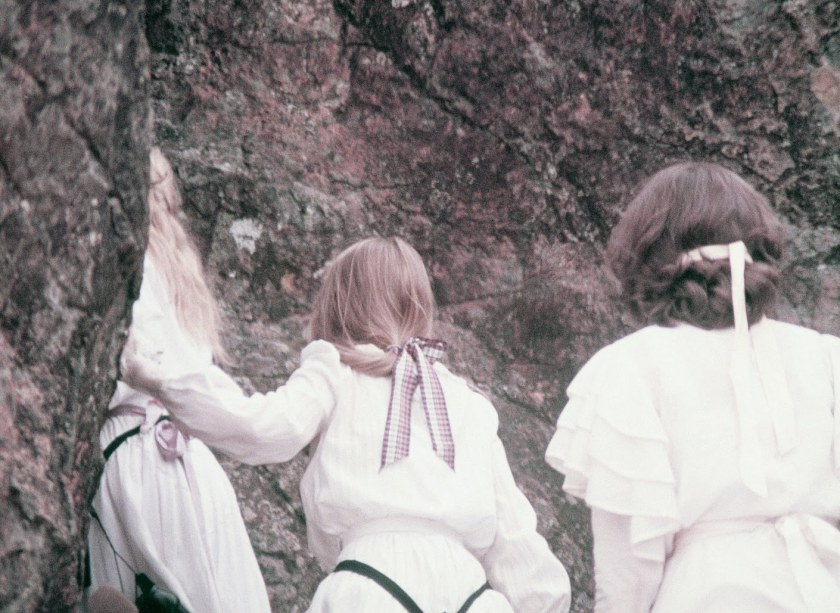
Disappearing in an kind of trance
Cut to the end of the day when they are late back (worrying this woman), and we learn that four of the girls and a key teacher there never returned from the rock: were they abducted and raped? did they decide to join the aborigines, a bushranger gang? did the landscape gods take them? One is found near death, without her corset; she is gradually nursed back to health but either never tells, cannot tell or is not asked to tell what happened to her and the others. The pace, the continual return to the rock, filming it from this and now that angle, the girls’ interactions, the music, the juxtapositions of incidents that happened and are happening at the school make the film mesmerizing.
In the features to Picnic at Hanging Rock it is suggested by one of the different members of the team (Weir himself, screenwriter, producer, production and costume design, also actors grown older are among these) that the girls eventually themselves joined some violent group of men. These bushrangers, people living outside the control of state apparatus (with their control of legitimate violence), people gone into a permanent rage from what has been done to them by such state terror and punitive militarism, torture (convicts say, with Israel as the equivalent terror state). There are parallels with American outlaws, not to omit modern Middle Eastern marauding groups under a central command (like ISIS). The movie is a meditation on intersections between Australian kinds of lives (class is important in the interactions of a couple of young males who become part of the search team), manners and cultures and its landscape and geology akin to An Australian girl.
It’s a woman’s movie as the central characters are all women — though the sexual perspective on the students is that of a man who thinks most of their problems come from sexual repression (the girls play voyeuristically and are shown to be prurient) The fable was a woman’s of the more genteel type. We see do see their rigid obedient routines, their trussed up bodies in clothes that grew out of a northern European climate.
The strict headmistress who cares intensely about money: she threatens to eject a girl whose parent has not been paying her bills; the girl dies, seemingly trying to get back to Hanging Rock, perhaps murdered by the headmistress, who seems also to end up destroyed by what has happened.
Weir credits Lindsay with giving him the basic matter for what can only be called an inexplicable visonary film; I’ve just gotten the book. On first blush it appears to be a gothic — more Shirley Jackson and DuMaurier than the 1930s gentlelady mysteries. Maybe it will help me understand what the fable is intended to convey; I feel it’s a flaw that the film remains inexplicable.
***********************
On the night of July 4th as I heard the noise of (as my husband, Jim would have said) senseless firecrackers outside, I watched an intensely compelling Fred Shepisi’s Chant of Jimmie Blacksmith, based on a novel by Thomas Kenneally (nominated for Booker). I cannot speak highly enough of this film — again it’s the “weird melancholy” of the landscape that does stand out as the suffusing ambiance of the work — Marcus Clarke, author of For the Term of his Natural life, used the phrase This is neither the usual bush frontier story nor that of the struggles of genteel or convict or working class or unfortunate women. It’s the story of an aborigine young man — this is so rare because it’s hard to tell their stories as their way of life does not lend itself to the conventional European narrative story of individual social rise, and they are not individualist in their worlds overtly nor do they seek success in this manner. Shepisi and Kenneally manage to make a film that somewhat fits by dramatizing the story of an aborigine young man said to be half white.
We see him taken from his tribe by a well-meaning but strict, repressive white clergyman: the clergyman has a switch with which he hits the boy when young after he has done something deemed wrong. Jimmie is educated to be Christian, taught to read, and live in the modern world with real skills, but when it’s time to leave this Reverence and find work, he not only cannot find work commensurate with his education, but at every turn as he does very hard menial tasks (like putting up fences) he is cheated, insulted, mocked, threatened, kicked, debased and given impossibly high standards before he can get his fully-earned salary. We see he is decent, not violent, and when given the opportunity gentle and courteous. The setting and time are the turn of the 19th century, just when a referendum for federation (what Trollope is so intent on as needed) is about to be voted upon. Also talk about the colony separating from the UK. We hear the talk of all this as background.
Jimmie becomes an officer briefly in order to better himself — to have less arduous work, dress better, be treated according to some rules. But he soon learns he is still treated derisorily, and put in a filthy stable to sleep. He becomes complicit in policing and repressing the aborigine groups in the area (breaking up their encampments, whipping them, wrecking their campsites), and finds he gets some real money (less than the others but still a percentage that is visible) for the first time. He experiences gestures of respect. But when the boss gets drunk and one night and tortures and kills an aborigine who has begged Jimmie to let him go (out of terror of this policeman), Jimmie cannot endure to cut the man down from where he is hanging and destroy his body before burying it. He runs off, and has made some enemies at that station.
We see too how aborigine culture has changed a lot — how they do dress in a sort of modern style and how they are prevented from developing a reasonable way of life with parts of their culture intact because what’s wanted is their disappearance.
The crisis occurs when while working on a farm he has an affair with a white girl servant, and marries her because he think she has gotten pregnant by him. He takes her to live with him in a cabin (very poor but comfortable enough) that he lives in on the bare land nearby. It turns out the child is wholly white, not his. She cries when she sees how hovel like is their home, but she has experienced his kindness, how well he means, how gentle and tender he is with the baby and her.
Almost immediately though he is again not getting the pay he is owed and the farmer’s wife refuses to bring groceries back from town for them. Soon they are near starving — no milk for the baby. The boss’s daughter wants that girl servant as cheap servant for herself as she is about to marry; all the whites think they have the right to part this couple. He tries to reason with them; they reject him, citing how he has his brother and family members in his house on their land, showing how they regard his people (and him by extension) hideous.
In a mad rage he returns to the house with an axe and begins to kill, the women there, the children; he picks up a gun, and begins a killing spree of all the people who have treated him so deeply abusively. Schepisi says in his feature we are seeing Jimmie tipped over the edge finally; he is having a mental breakdown, he feels horrible about what he is doing (and Tommy Lewis had a look of appalled horror as he axed the women who had tried to erase him, take his wife, starve him) and yet has no control over himself any more. He conveys the horror of the people who are being killed. Who Jimmie is doing this to.
Well this mad spree of self-inflicted horrors brings down on him a vengeful posse and on his brother too the brutal vengeance of these people — who are themselves deeply grieved at their losses. Jimmie did hurt them back. A couple of the whites – the original pastor, and a schoolmaster he takes as a hostage — could be and are decent to him even in the exigent circumstances of the flight into the bush. The pastor blames himself for taking Jimmie out of his culture. Jimmie tries to save his brother by going off alone; it only enables the posse to find and murder his brother quicker.

His brother’s traditional face-mask out of make-up takes on a poignancy (Freddy Reynolds)
Exhausted, hungry, he is cornered in a stream, his mouth shot off and he creeps into a nunnery. He is picked up by the police, beaten savagely by butts of rifles, rakes, hit by stones, anything people can lay their hands on, on the way to the temporary prison, and last seen, he is shivering, shaking uncontrollably, miserable wrapped in a blanket leaning on a wall. One of the images from The Proposition I remember is the youngest brother of the Burns gang put in prison by Ray Winstone as police officer (to protect him from the mob), looking like that.
Tommy Lewis has said Jimmie is the underdog in all situations, all of us; the film enables the underdog to gain strength, to sit up and buck: “the medicine is to keep singing, the chant of Jimmie Blacksmith is the song of all men.” The film projects all that has happened to aborigine people in Australia.
**********************
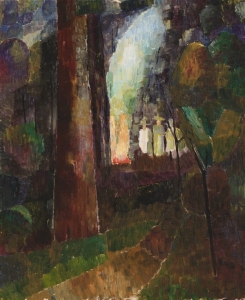
Grace Cossington Smith (1892-1984), An Image of Bonfire in the Bush
Tamara Wagner’s Victorian Settler Narratives, a collection of essays, includes three centering on Trollope’s fictions, one about bushfire (a terrifying event for anyone new to it) connects to Trollope’s Harry Heathcoat. Wagner’s book is informative and judicious and looks to see what was the cultural work done by most of the ficitions, not which were the best artistically or as statements about imperialism or colonialism. I made notes only on those pertaining to my project, omitting for example an essay on Susannah Moodie whose great Roughing it in the Bush I loved, as well as Atwood’s Booker Prize, Alias Grace, and Charlotte Gray’s biography of Susannah and her sister, Cartheine Parr Traill: Sisters in the Wilderness. In the book somewhere it’s mentioned that Moodie’s masterpiece may be read as about futility (yes, she exposes false ideas about independence and what the experience is like). It seem to me Atwood’s poetry sequence, The Journals of Susanna Moodie (quoted above) tell all that the popularizing narratives below elide, erase, and try to impose colonialist-imperialist agendas on.
The introduction by Wagner: that the representations of the settler world transformed the idea of home itself (p 1), that while the narratives were “meant to realize the Utopian plans that promised a better world … successful or disrupted … they “exploded as often as reaffirmed the metropolitan home’s presumed inviolability as a cultural center or home.” The porosity of the imagined borders … Some stories were presented as “masculine adventure,” genre experiments emerged (3). The “portable home’ was part of the conception (3), propaganda for emigration, cautionary tales. Disappointments included the nature of the land, the real hardships (not mentioned explicitly by Wagner), and that emigrants were easily made dupes (Susanna Moodie mentions this). Wagner sees this phase of literature as ending in attempt at re-mapping of what is greater Britain (7). On Morusi’s essay Wagner adds state welfare for orphaned children in Australian (and elsewhere?) consolidated the imperial family.
Dorice Williams Elliot’s “Unsettled status in Australian Settler Novels” is on emerging tropes of Australia’s popular image in 19th century; she says the wild west as a trope was worked back into early Australian novels. Mary Vidal’s Bengala (1860) and Alexander Harris’s The Emigrant Family (1849) redefine gentility and feminity in a new Australian model while solidifying class positions, which are themselves paired with metropolitan reactions. She presents a rereading of Harry Heathcote: it consists of a new amalgam of masculine gentility, not just (or not quite at all) family connections and at least manners, taste, dress, but also business skills, resourcefulness, practical skills. Harry Heathcote resembles Bengala because we get an alliance between rivals. The hero very like Harry and Giles Medlicot. The new (or expanded) style of femininity stresses the creation of home with alliance on the wife having to have practical skills. The Emigrant Family and Kingsley’s Geoffrey Hamlin shows a woman squatter and ex-convict working side-by-side: more roles for women. Critical to present squatters as sharing work ethic and work, lead and compromise, practical skills. These books tried to do the cultural work of creating a united Australian gentry.
From Amy Lloyd’s “For Fortune and Adventure: Representations of emigrations in British Popular Fiction, 1870-1914.” The US rivalled Australia as most popular destination. Canada much less popular as a place for emigration; depicted as a vast wilderness, hardworking and lucky people might achieve a better life, daring seek adventure. They were envisioning a new lot; women not shown as independent but joining relatives abroad, escaping desperate circumstances and abandonment (Diana Archibald begins with story of her grandmother where she finds the latter at the core of her story.) Positive emulation is the thrust. Paul Denham’s After Twenty Years is thus an unusual story of a man broken by his experience, returning to the US to die. Some stories of dangerous violence but mostly not. Absence of females in these stories did not encourage female emigration; an intense desire to return with enough to build better life in the UK is part of these stories. Trollope’s books could serve as an antidote to idealism and exotic portrayals.
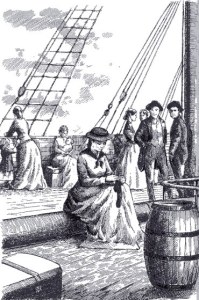
Mrs Smith aboard the Goldfinder: from Francis Moseley’s 20th century illustrations for John Caldigate
On Tamara Wagner’s “Setting Back in At Home:” Imposters and Imperial Panic in Victorian Narratives of Return.” She finds often in these stories the best reward is the return home to an idealized existence. She brings out how Tichbourne claimant connects to fraudulent identities made possible; adds to scams the Indian emigration story in Collins’s Moonstone. She discusses Clarke’s For the Term of his natural Life, Charles Reade’s Gold! and It’s Never Too Late; Diana Craik’s Olive. The 1886 A Rolling Stone by Clara Cheeseman (New Zealander) comes out of trials (fraudulent identities again). We have failed emgration in Great Expectations: Dickens novels have unwanted returnees (so too Lady Audley’s Secret, Collins’s No Name). These and Mansfield Park lay bare dysfunctional arrangements in England. People’s existence in English homes are ripped apart by returnees or emigration results: Jane Eyre, Craik’s Olive, Trollope’s John Caldigate. It became common for emigrating women to be represented not just as useful and vulnerable, but also as undomestic or corrupt. They must transport domesticity and the domestic virtues changed and do not. She thinks that John Caldigate complicates the sensational plot of the return home, satirizes the stereotyping of undomestic space by allowing Mrs Smith, the shabby genteel widow, to speak, although Trollope centrally uses a sexual double standard. We have a reverse portability – Shand returns to Australia; Mick Maggot becomes an alcoholic; but Caldigate discovers he does not like this new Australian life, although he has been moderately successful. She sees a reversal of the literary conventions and finds the scenes of Hester’s imprisonment comic (I disagree on both counts). Three Clerks debunks notion that emigration is magic cure for whatever has been wrong.
Grace Moor’s “Surviving Black Thursday: The Great Bushfire of 1851,” on the sheer terror of the bush fires and how people learned to avoid and then cope. Moves from stories of destruction and horror to heroism and survival. She sees how fiction became an important means of reasserting a mastery of the landscape and the permanence and stability of the home.
Kristine Morusi: “The Freedom suits me: encouraging girls to settle in the colonies” – this one is about Catherine Spencer’s Handfasted and girls’ magazines and finds an empowerment of white women as well as stories which intend to control mixed marriages.
********************

An 18th century picturesque style depiction of Varanasi, an area in India (Utter Pradesh, by the Ganges)
To conclude: I now see emigration anew and remember it takes in far more texts and historical individuals than I usually think of in this context. For example, in The Austen Papers the story letters of Eliza Hancock de Feuillide Austen, Jane Austen’s cousin, daughter of Austen’s aunt, Philadelphia, the woman who went (or was pressured into going) to India from England to sell herself in marriage, and of Warren Hastings (never openly acknowledged). The letters of her legal father, Tysoe Hancock, to her mother and hers call out for contextualization by post-colonial studies of the British in India. On wikipedia you may discover a famine was occurring as Hancock wrote one his letters so we can see the true context for this man’s complaints that he had to do some work as a surgeon for his sinecure, and his indignant irritation at the state of the streets too (which he does not explain) — just littered with these corpses and the starving and diseased? Eliza is the child of an emigration; she became an emigrant when she went to France and lived with a man who hoped by marrying her to gain money to drain his land after he threw his tenants off (instead they or their representatives guillotined him and another ruthless female owner who said aloud she had the right to salt the soil rather than let the tenants continue to grow produce on it). These Austen figures will yield far more about what happens to people under the pressure of imperialism and settler colonialism than Mansfield Park; they call out to be seen in the context of colonialism and all that was happening in India and France globally.
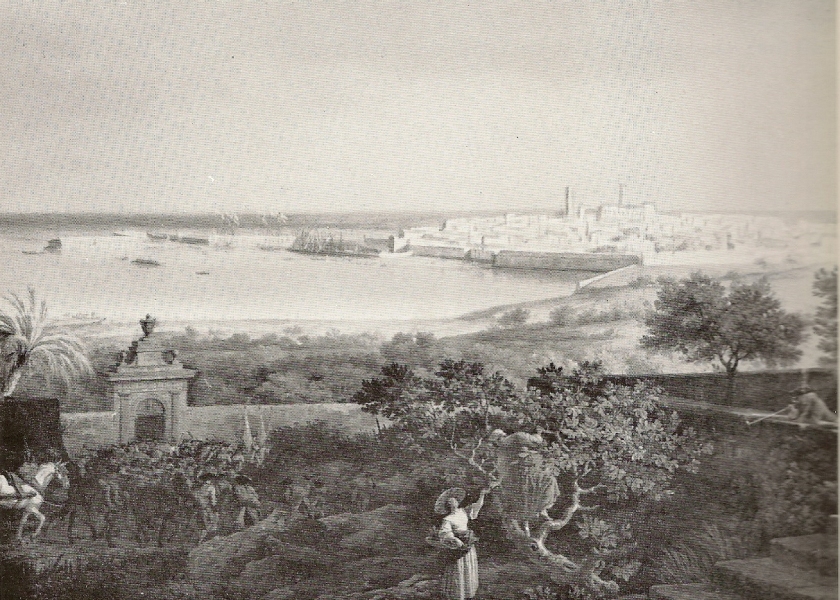
Joseph Vernet, Antibes Port Hinterland (1756)
Ellen

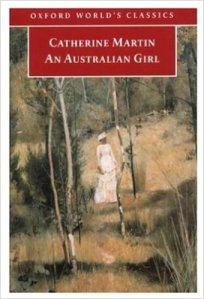

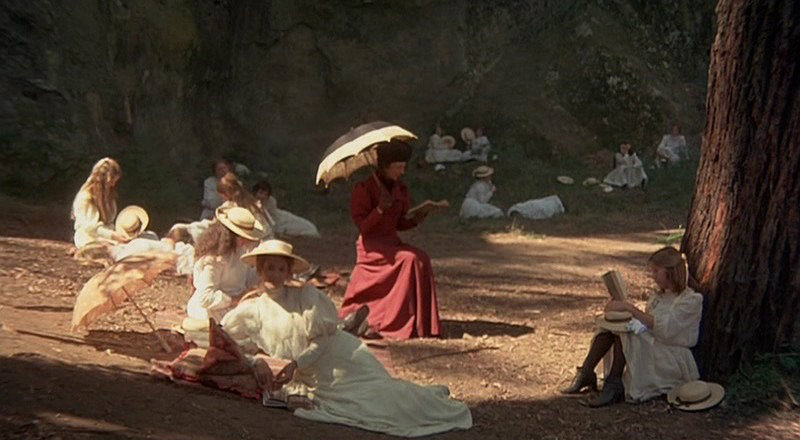
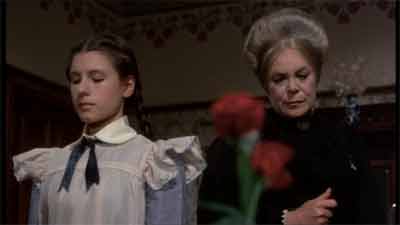


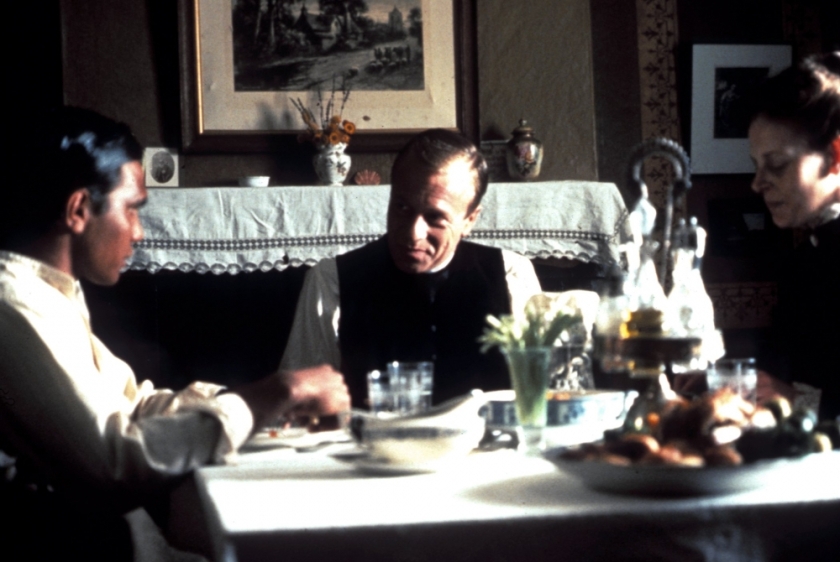

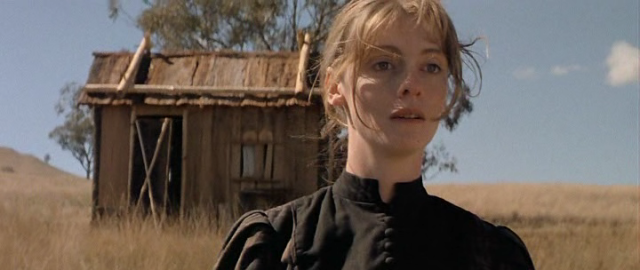
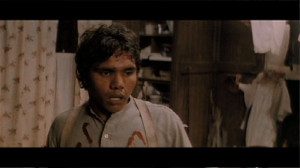
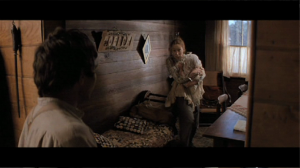
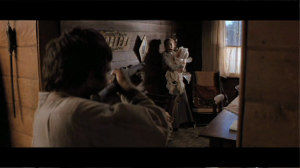
Reading Gender and Imperialism, ed Clare Midgely, I came across two of special interest I thought. In Padma Anagol’s “Indian Christian Women and indigenous feminism, 1850-1920,” Anagol shows how intensely liberating for Muslim and Hindu women was the first introduction to Christian ideas: for the first time ever they found themselves respected, not systematically vilified, made passive, and how especially widows were liberated — widows in many cultures have been so badly treated because they are older or stand to inherit property as an individual. They kept their traditional dress and food — there are stories of women killed, women killing themselves, women trying to live independently when the family threw them out — they needed the missionaries for help or they emigrated. The story does not go up to the 20th century when in a few countries there was an attempt at secularization, most of them put down by outside imperialist gov’ts or powerful men within the culture (1950s to 70s).
This has bearing on multiculturalism — these brave Indian women did pick and choose. Anagol cites a few novels and memoirs, it appears very hard to get, expensive or out of print. Another essay (to the reviewers I read and me ridiculous) inveighs against the imposition of British ways on women over widow-burning, the customs which shaved widows’ heads, turned them into street prostitutes in houses of women like them. The widow-burning has gone but not the widow’s houses — Water, a film I saw some years ago shows the latter horrors still go on.
Marilyn Lake in “Australian frontier feminism and marauding white men,” shows how the myth, legend of the frontier, and the implicit respect and admiration given marauding men presented as central to the Australian character has been very bad for women. One result has been movements by women where they naturally seek protective legislation and move into anti-sexual legislation (“purity”) to try to protect themselves. Women of color, native women, women alone were subject to rape and assault, especially the first two, the third even when white (but then it was not boasted about). All the books on these myths don’t talk about that — just about all by men. Catherine Martin’s book focuses on a woman’s story; alas about 2/3s through it evolves into a story of a sister-in-law improbably lying by forging letters (somehow transparently improbably unlike Richardson’s Clarissa probably because it was probable until then). We are to hate the sister-in-law as the great enemy. She is mercenary, materialistic, socially ambitious with an unfaithful spendthrift awful husband she married for his rank. But it does not participate in this frontier myth as central to the Australian character. Barbara Baynton shows women suffering from these supposed realities domineering everyone (it has to be remembered that most people in Australia actually lived in towns and still do) but she does not point out how bad this one is for women.
It reminds me of the myth of the US west — but since the US is so big and crowded and has myths about cities and the early revolutionary war, to say nothing of racism in the civil war, this one is not seen as so central.
Catherine Hall examines Trollope’s reputation as the ultimate archetypal male traveling about the world and writing in “Going a-Trolloping.” She opens on the idea that the imaginary of English centrally included images from around the world identified as the “empire.” The Empire offered adventures for men outside the “old” country or world. To readers Trollope (and I add other male travel writers) offered “the pleasures and dangers of colonial masculinities and the imagined safeties of an Englishman’s identity.” Nonethless, while people may have enjoyed his book The West Indies and the Spanish Main, but together with the reputation of his mother’s Domestic Manners of the Americans, the book led to the phrase “Going a-Trolloping” which meant traveling writers “who knew not what they saw.”
In retelling his life, for Trollope particularly Hall says that his transplantation to Ireland led to “his sense of himself as a man” to be something he achieved “in another place.” The “social acceptance” he found in Ireland “gave him the confidence to articulate a new identity as a man and to find a writing voice.” When he became popular, this popularity was predicated on his “capacity to make people laugh, the sense of comfort and security which he exuded,” his “rough vigor and energy” with a group of tastes seen as peculiarly English.
However, says Hall, in his travel writings he speaks clearly on “the question of race” in a “voice that disturbs this safe and kindly image.” What we find in his travels to places where Anglo-Saxon people are colonizing” he gives us “access not only to the racialised and gendered thinking of one key Victorian organic [?] intellectual;” his attitudes to race, other societies, peoples surface in his fiction alongside his usual preoccupations.
Trollope is sure the English have a right to rule, confident in his depiction of a “cartography of peoples.” He takes his friend and brother-in-law, Merivale’s definition that “a colony is a territory in which the soil is entirely or principally owned by settlers from the mother country,” where the word “mother” is taken seriously. He sees himself as looking at characteristic states of development, and his views changed, matured as he grew older and saw more. His idea is only a desire for individual property and a willingness to work for this makes for civilization. He writes against “philanthropists” and missionaries as thinking in unreal ways. He’s very impressed by the Maoris in New Zealand because he finds their society begins to approximate forms he finds in European societies. A “gallant courageous people.” At first blacks are people who need to be ruled, and he refuses to damn slavery (both in The West Indies book and North America); in South Africa, though, he sides with the Zulus, is against imperial expansion. He is against certain forms of imperialism, militaristic, trying to control other countries and places and keeping them dependent; he is very against ideas of glory in and power in running military depots from far away. He gradually sees black people learning to labor for themselves (examples are in South Africa, and one in Washington, DC — his landlord). He thinks people should be governed from their home, be independent as new societies. He writes “To have founded such colonies … is the greatest blessing which we have above other nations” (quoted by Hall from Australia and New Zealand)
After labor, family is the “great civiliser”; his views of all he sees is shaped by a “timeless gendering.” His father had not succeeded, and his mother had; he is all the more in no doubt “the necessity of the supremacy of man [over women] is as certain to me as the eternity of the soul.” He recognized some women had to go outside the home to survive, but he was against this insofar as one could force husbands to support their wives decently, humanely. He did see that some women did not accept the idea the most important aspect of their lives was marriage. He saw this as the result of “sexual frustration.” In his travel books, he makes uncomfortable jokes about black women he meets who are dressed attractively and act independently as they work for money. I agree that Trollope feels certain that women’s ambition corrupts them (and I see examples of this in his fiction).
His hopes for the new colonies are bound up with men being able to exercise their will and morality in a manly independent way; they are given far more opportunities to do so. Jamaica can’t provide this it seems (are there too many black people? the climate not conducive to his vision of a good life?). Hall says the vigor and energy Trollope saw in Australia, New Zealand and North American excited, energized him. He implies that such British people are better off, do better without “other races” (including the Irish) around them. He does write in deeply empathetic terms of the Irish, but he also condescends and dismisses them when poor. He believes in joking Irish stereotypes. So finally he is celebrating a white brotherhood of Anglo-Saxon males.
Says Hall this vision was “part of the everyday culture of Victorian readers.” I demur partly because I think of the desperate moving tragedies we see in a few of the stories, and his “Journey to Panama” where his heroine Miss Emily Forrest voices eloquent protests against this system in the way in John Caldigate Mrs Smith does. These help redeem his texts as does his sheer information and insights within the constraints of his outlook. As in his fiction, his persona is that of a friend taking her along with him and he writes vividly, perceptively, thoughtfully.
Elle
I had forgotten — many people seem to — that Trollope has a second long novel which takes the characters to Australia: The Three Clerks. After Alaric Tudor is found guilty of embezzlement and goes to jail, when he gets out, Micawber-like, he takes his family to Australia. Gertrude writes letters back describing her experience: before Trollope ever set a foot there, he saw it going there in a sceptical disillusioned realistic light. He was not a man to believe in myths.
Catherine Janofsky: “One of my top ten movies, picnic still creeps me out.
Me: Many people find Shirley Jackson’s Haunting of Hill House powerful, and I felt terrified at the Robert Wise’s famous film made from it (1960).